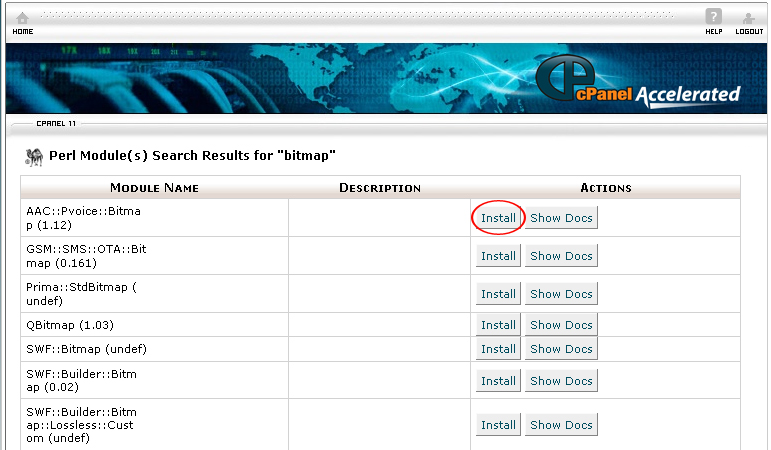

Pkgdesc='This packages the Foo-Bar distribution, containing the Foo::Bar module!' The second PKGBUILD can be used as a starting point for a distribution which uses Build.PL.
#Install perl module how to#
The first PKGBUILD is an example of how to package a distribution that uses Makefile.PL. Because there are two styles of build scripts, there are two example PKGBUILDS. The following two PKGBUILD examples use techniques, introduced in this page, that are intended to make a PKGBUILD more resilient to more sophisticated problems. Online documentation is available at PKGBUILD Examples

This plugin packages distributions on the fly as they are installed by CPANPLUS. c files.Ī plugin for the second-generation CPAN shell, CPANPLUS, is available in the perl-cpanplus-dist-arch package. An XS module usually contains one or more. XS modules are compiled into dynamically loaded libraries (.so files) and should explicitly set their architecture to ('x86_64') in order to indicate that they are architecture dependent when built. In most cases, the arch array should contain 'any' because most Perl packages are architecture independent. packlist also should not be present this is taken care of by the example PKGBUILD described below. When a user installs modules system-wide by using the cpan shell, modules end up in the site-perl sub-directories.
#Install perl module install#
No files should be stored in /usr/lib/perl5/$version/site_perl/ as that directory is reserved for use by the system administrator to install Perl packages outside the package management system. This is done by setting the INSTALLDIRS command line parameter to vendor as shown below. Perl packages should install module files into /usr/lib/perl5/$version/vendor_perl/ (use perl -V:vendorarch in scripts), or /usr/share/perl5/vendor_perl/. Perl applications should have the same name as that of the application but in lowercase. For example the package name corresponding to HTML::Parser will be perl-html-parser. In an effort to please the casual TL DR reader, the easiest and/or most popular material is at the top.įor modules the package name should begin with perl- and the rest of the name should be constructed from the module name by converting it to lowercase and then replacing colons with hyphens. This section serves as an introduction to the concept of perl packaging, from the point of view of Arch Linux that is, package management and system administration.

The following conventions should be used to keep perl module packages consistent.


 0 kommentar(er)
0 kommentar(er)
